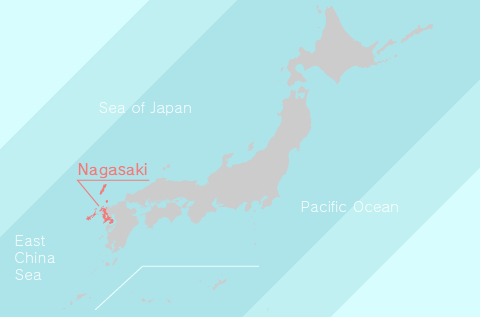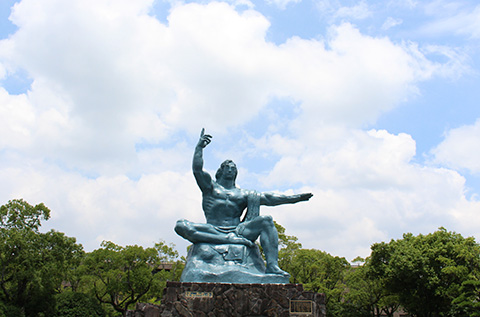What is Japan like?
About Nagasaki Prefecture

The Location of Nagasaki Prefecture
Nagasaki Prefecture is located in the northwestern part of Kyushu, facing the Ariake Sea and the East China Sea. The prefecture is home to 971 islands, which make up about 45% of its total area. Additionally, due to its ria coastlines, which are deeply indented, the total length of its coastline extends to 4,184 kilometers, making it the second longest in Japan after Hokkaido.
Nagasaki has many natural harbors within its bays, supporting industries such as tuna and fugu (pufferfish) aquaculture. The East China Sea also features a continental shelf rich in a variety of fish. The islands of Nagasaki are located close to the Korean Peninsula and Mainland China, making them historically important for maritime traffic, trade, and cultural exchanges.
Nagasaki is also famous for being the landing site of Francisco Xavier in the 16th century, which led to the spread of Christianity and the flourishing of Nanban culture (Western-influenced culture). During the Edo period, Dejima, an artificial island in Nagasaki, served as the only official point of trade between Japan and the Netherlands.
The city of Nagasaki was also the site of the second atomic bomb attack during World War II, resulting in significant damage and loss of life.
In terms of climate, Nagasaki experiences a generally warm climate due to the influence of the Tsushima Current, making it more temperate than other parts of Japan.

Peace Memorial Statue in Nagasaki, Japan.
Like other prefectures, Nagasaki is experiencing a declining birthrate and an aging population, which is expected to lead to labor shortages. The number of foreign workers in Nagasaki is just under 6,000, with most coming from Vietnam, China, and the Philippines. Approximately 40% of these workers are employed in manufacturing, while others work in wholesale and retail, hospitality and food services, and agriculture and forestry.
In terms of residency status, nearly 50% are technical interns, making this the largest group. Around 20% are engaged in activities outside their designated visa status, and another 20% work in specialized or technical fields. These foreign workers play an important role in supporting Nagasaki's labor market across various sectors.

